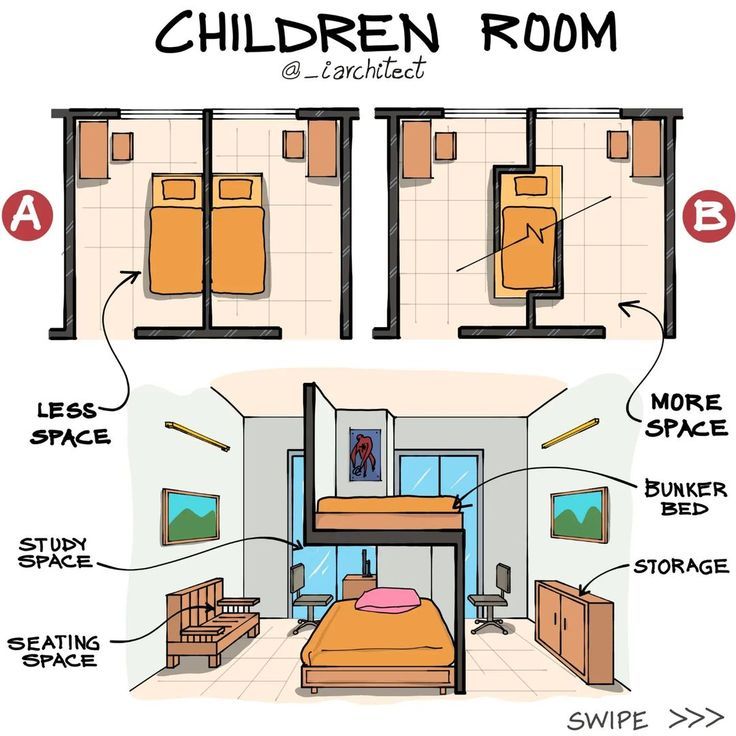From cramped layouts to creative bunk bed solutions, here’s how modern design transforms a child’s room into a space for sleep, play, and learning.

Designing a children’s room goes beyond simply placing a bed and some storage—it’s about creating a multi-functional environment where children can rest, study, and play comfortably. The illustration above perfectly captures the evolution of smart space management in a child’s room, showing how thoughtful design choices can make all the difference.
🛏️ Layout A: The Traditional Setup (Less Space)
- Two separate beds side by side consume most of the room’s floor area.
- Limited circulation space, leaving little room for activities or additional furniture.
- Study and play areas are compromised, making the room feel tight and cluttered.
- Storage solutions become an afterthought instead of an integrated part of the design.
This setup often feels restrictive, especially for growing children who need space not just for sleep but also for learning and creativity.
🛏️ Layout B: The Modern Solution (More Space)
By introducing a bunk bed, the same room suddenly transforms into a multi-functional haven:
- Vertical Space Utilization: Beds are stacked, freeing up the floor for other uses.
- Study Space: A designated study corner helps children focus on homework without distractions.
- Seating Space: Chairs and a small sofa provide a spot for reading or bonding with siblings and friends.
- Storage: Cabinets and shelves keep the room organized, reducing clutter and teaching kids responsibility.
- Play Area: With more floor space available, children can enjoy indoor play without compromising safety or comfort.
🎨 Design Psychology
- Bunk Beds = Fun: For children, bunk beds feel adventurous, adding a playful element to their everyday environment.
- Study Corners = Productivity: Separating study and play zones helps instill discipline and focus.
- Storage Integration = Organization: Teaching children early on to keep their things in place encourages lifelong organizational habits.
🌟 Why This Matters for Families
- Maximizes Small Rooms: Especially useful in urban apartments where space is limited.
- Encourages Independence: Clear zones for sleeping, studying, and playing empower children to use their room independently.
- Promotes Creativity: An open floor plan gives kids the freedom to move, play, and imagine.
- Practical for Siblings: Bunk beds allow two children to comfortably share a room without conflict over space.
✅ Final Word:
The transition from Layout A (less space) to Layout B (more space) shows how simple architectural choices can transform a room’s functionality. With a bunk bed, defined study and seating areas, and smart storage, a children’s room becomes more than just a bedroom—it becomes a complete environment for growth, creativity, and learning.